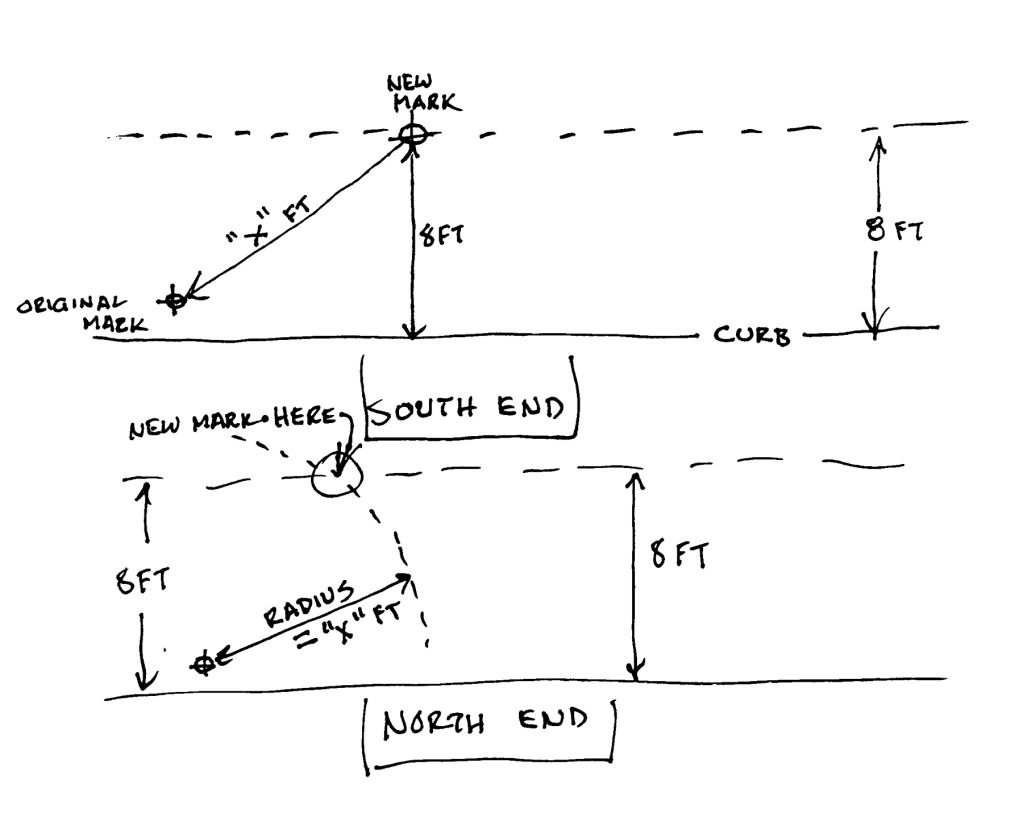Here’s how I did my Kirkham Road cal course. See it as OH05028PR.
I began at the south end. I measured 8 feet from the joint between the concrete curb and the asphalt, at a point about 70 feet north of the original mark. I put a nail at this point.
I then measured from the original nail to my new nail, and recorded the distance as “X”.
I moved to the north end of the cal course, and swung an arc of radius “X” centered on my original mark. At the point where the arc was 8 feet from the curb I put in a nail.
Scores of comparative rides have never detected a difference in the calibration lengths of the two resulting cal courses.
You will get the best results if “X” is as long as practical.

This is not a new thing. Discussion first arose in 1985 and was written about in early issues of Measurement News.
Anyone curious can go to
www.rrtc.net and navigate to the archive of Measurement News which Alan Jones maintains on his Runscore site. Download the index and you can search for “offset” and find good historical material.
See esp. 1985 issues #11 and #12.

